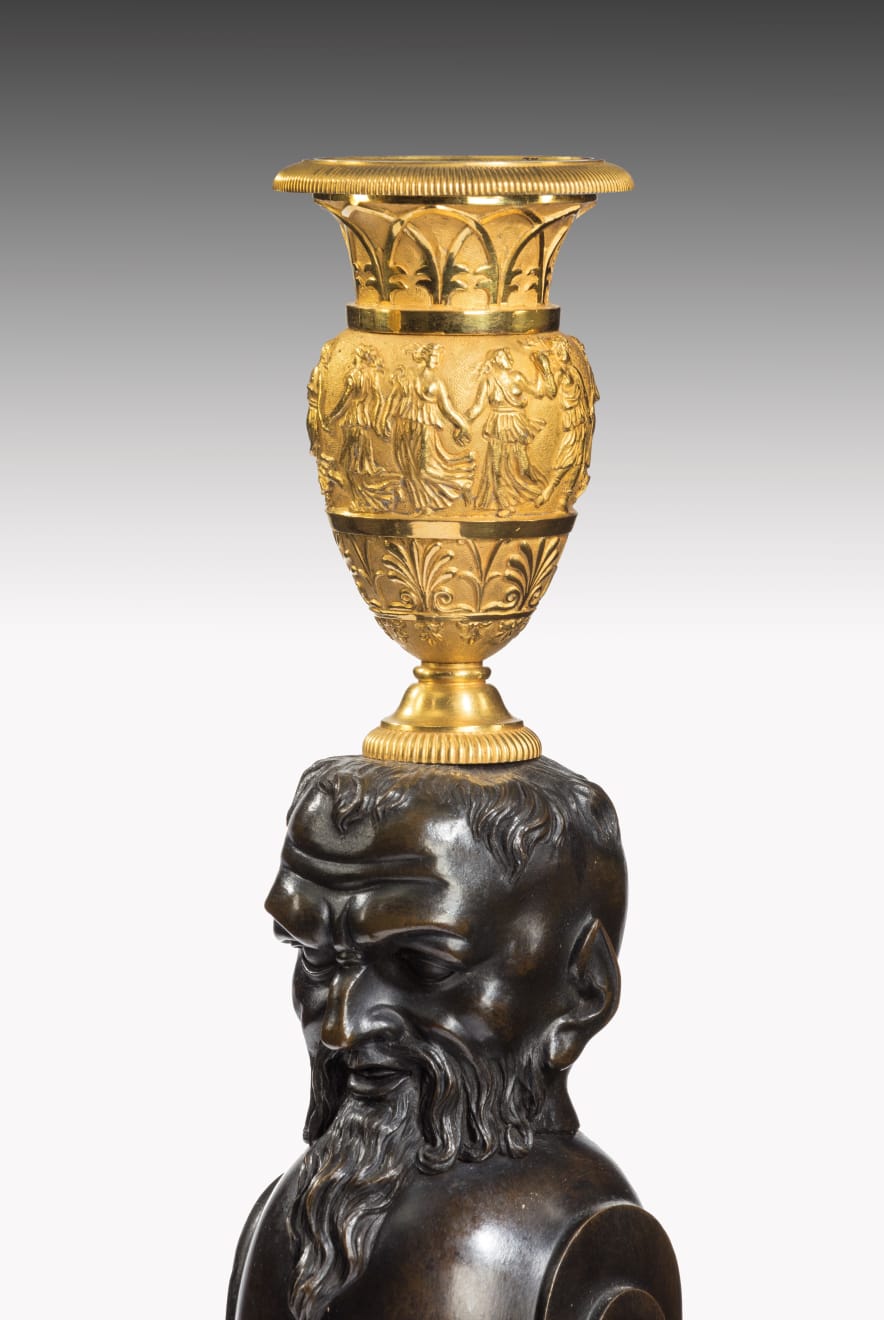Pair of Empire Bronze and Ormolu Pair of Empire Bronze and Ormolu Candlesticks
35.5 x 10 x 10 cm
Further images
The candlesticks incorporating terms of the ancient god, Pan, who, in Greek mythology, was associated with fertility; rustic music and dance; and drunkenness. Pan is also the companion of the nymphs. He has the hindquarters, legs, and horns of a goat, similar to the attributes of a faun or a satyr. Pan’s homeland is Arcadia, and he is known as the god of fields, groves, and wooded glens. As a result, Pan is associated with fertility and Spring time.
In Nicolas Poussin’s ‘A Bacchanalian Revel before a Term’ (1632-3, Oil on Canvas, National Gallery, London; Inventory number: NG62), the artist depicts revellers in Arcadia drinking and dancing in front of a ‘term’ – a pillar with a torso and the head of Pan (https://www.nationalgallery.org.uk/paintings/nicolas-poussin-a-bacchanalian-revel-before-a-term). Our pair of candlesticks show Pan and the nymphs together – the nymphs depicted in the decoration on the ormolu vases which are balanced on Pan’s head.
Interestingly, a design for a chamber-style candlestick annotated ‘Lefranc’, held in the Collection of the Musée des Arts Décoratifs, shows a term of Pan and a nozzle incorporating similar depictions of nymphs; albeit in a different format












